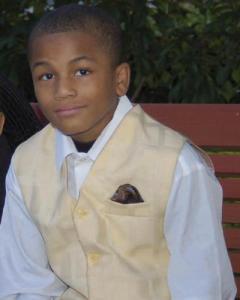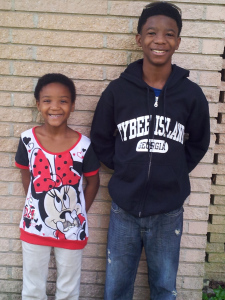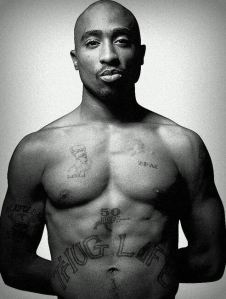SUFFERING IN SILENCE: Nerds, Blerds and other Victims of Bullying in the Black Community
 The death of a 7 year-old boy from Detroit, who is believed to have hanged himself in mid-May, 2012, because he faced bullying at school and the separation of his parents, should have been a wake-up call to all families and communities.
The death of a 7 year-old boy from Detroit, who is believed to have hanged himself in mid-May, 2012, because he faced bullying at school and the separation of his parents, should have been a wake-up call to all families and communities.
This tragedy should have prompted people of Afrikan descent to dispel the myths about the need for counseling and mental health when a child is troubled and of course, the need for more of us to pursue careers in the field of mental health.
But it didn’t.
 Last year, in September, family and friends of Lamar Hawkins III gathered to honor the life of the 14 year-old who committed suicide in his school’s bathroom after suffering bullying for months, from boys AND girls.
Last year, in September, family and friends of Lamar Hawkins III gathered to honor the life of the 14 year-old who committed suicide in his school’s bathroom after suffering bullying for months, from boys AND girls.
Hawkins attended Greenwood Lakes Middle School in Lake Mary, Florida.
The family had recently moved to Sanford, Florida from New York to raise their children in a safer environment after Lamar Hawkins III suffered bullying there, as well.
On the day of the shooting, Lamar’s mother, Shaniqua Hawkins, went to pick up her son from the school at approximately 5:00 p.m. but he was nowhere to be found. He was reported missing two hours later and after deputies searched nearby neighborhoods, he was found dead from a self-inflicted gunshot wound inside a bathroom stall inside of the school.
Our children need to know that they are loved. They need to know that they are important. This is not an indictment of anyone, but someone along the way failed these children.
These children felt hopelessness and helplessness. They decided that death was better than life. They were not crazy. They were in despair and we could have saved them.
But we didn’t.
They suffered in silence, as often we do.
 The 7 year-old boy, who the press refused to name, reminds me of my son, Oluade for a few reasons: 1) because he was the only boy in the home with eight girls and women, just as Oluade is – he has 7 sisters and his mother – and 2) because Oluade was also bullied.
The 7 year-old boy, who the press refused to name, reminds me of my son, Oluade for a few reasons: 1) because he was the only boy in the home with eight girls and women, just as Oluade is – he has 7 sisters and his mother – and 2) because Oluade was also bullied.
Unlike the 7 year-old, however, Oluade, thankfully, still lives. The 7 year-old, on the other hand, was discovered by his 14-year-old sister, hanging from a bunk bed with a belt around his neck.
While the bullying is said to have occurred at school, psychologists say teachers and administrators usually are the last ones to know if a child is being bullied.
A child’s peers will know if he or she is being bullied, but teachers are usually blind to the suffering of the children in their care.
I say blind because children who are troubled by bullying and other pressures at school show signs. Teachers just don’t – or won’t – see them. A bullied child may display regressive behaviors; they become withdrawn.
When we parents notice unusual behavior in our children, we should talk to them, show them love and, more often than not, we should seek some outside help and support – from respected elders in your family and community, from mental health experts, from spiritual leaders and / or support groups.
It is not an indictment of your parenting skills to seek resources to help your child.
Bullying is an increasing problem for children in Black communities throughout the U.S., but there are not a lot of statistics that reflect that. Most of the statistics point to problems in white, suburban communities.
In the Black community, many services our children need are cut. Schools have counselors, but if a school counselor has 300 or 400 students on his or her case load, they aren’t able to serve any of the children properly.
Here are some of the warning signs parents should watch for in their children:
Signs of depression such as ongoing sadness, withdrawal from others, losing interest in favorite activities, or trouble sleeping or eating – experts define depression as a negative view of self; a negative view of the world; and a negative view of the future.
Talking about, or showing an interest in, death or dying.
Engaging in dangerous or harmful activities, including reckless behavior, substance abuse or self-injury.
Giving away favorite possessions and saying goodbye to people.
Saying or expressing that they cannot handle things anymore.
Making comments about things being better without them.
To some people, it is unbelievable that black children bully other black children. One brother told me “Black children don’t bully; we thug.”
Well, the word “thug” originates in India. It was a term used to describe a ruffian and assassin. Today “thug”is a nominally polite way of non-Afrikans saying “nigger.”
When someone other than people of Afrikan descent talks about thugs ruining a place, it is almost impossible today that they are referring to somebody with blond hair and blue eyes. It is a sly way of saying “there go those niggers ruining things again.”
Thug, in the Black community, for about the past 25 to 30 years, has also meant ruffian or violent criminal, but being a ruffian is displaying a healthy sort of countercultural initiative, displaying a kind of resilience in the face of racism and oppression.
 The word thug made a major change with the rise in popularity and cultural influence of Tupac Shakur, who had Thug Life tattooed across his stomach. Tupac Shakur is thought of as a god by many people. If he was a thug, then clearly if an Afrikan says “thugs were messing up the neighborhood,” then we mean something other than reprehensible.
The word thug made a major change with the rise in popularity and cultural influence of Tupac Shakur, who had Thug Life tattooed across his stomach. Tupac Shakur is thought of as a god by many people. If he was a thug, then clearly if an Afrikan says “thugs were messing up the neighborhood,” then we mean something other than reprehensible.
But bullying is reprehensible.
When a Black child makes straight A’s, comes to school on time, speaks in complete sentences, chooses a salad over McDonald’s, says “excuse me,” “please” and “thank you,” wears his pants up and talks about going to college or owning a business or being a CEO and is told they are acting white and then teased or even beaten up for it, he or she has been bullied – and that bullying is reprehensible.
Why? Because the bullied child changes with the hope that the bullying will stop. The grades slip from straight A’s to B’s, C’s and even F’s. The speech slips from speaking in complete sentences to calling his father “bruh” and his mother “shawty.” The clothing changes from neat to pants hanging down and the hair goes uncombed. They either drop out of school or finish at the bottom of the class – all done to stop the targeting and to fit in.
I know this to be fact. I am talking about my own son – other than dropping out, which he probably would have done had he been 16 instead of 11 or 12. And he wasn’t considered acting too white, but too Afrikan.
Did Oluade report to the school about his harassment?
Yes, he did. But it was ignored. It was not a big deal until Oluade fought back and someone other than my son got hurt, the fight ended up on Instagram and the school was embarrassed.
But the bullying didn’t stop. I removed Oluade from the school after students stole his new hat, new coat and backpack from his locker, urinated in his hat and spread the contents of his backpack all over the school. The coat was never recovered.
Urinating in his hat was an act of sexual violence and my gut told me the violence would escalate until either Oluade or one or more of the bullies were dead.
The poor monitoring of students and lackadaisical approach to bullying in public – and private – schools has to change in order to protect our children. Parents, teachers and other staff need to be taught that bullying is not acceptable and consequences must be put in place for such behavior.
Oluade’s plight and the plight of other children, teens and adults who continue to suffer physically and mentally because of bullying inspired me to write The Young Afrikan Warriors’ Guide to Defeating Bullies and Trolls. Within, you will find solutions to the problem of bullying and ways for the victims of bullying – and the bullies – to heal.
What are your experiences with bullying – as victim, parent, teacher, or bully? I invite and encourage your feedback.





